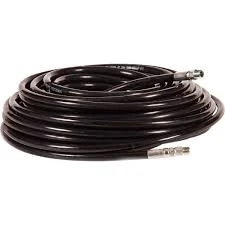Understanding the distinctions between R134a and 134a refrigerants for better application choices
Understanding the Differences Between R134A and 134A Refrigerants
When it comes to refrigerants, the industry often uses specific codes and compounds to categorize different substances based on their chemical properties and environmental impact. R134A, also known as HFC-134a, is one of the most commonly used refrigerants in various applications, particularly in automotive air conditioning systems and refrigeration. It’s essential to clarify that there is no technical distinction between R134A and 134A; they refer to the same chemical substance—1,1,1,2-tetrafluoroethane—therefore, understanding the implications of R134A involves discussing its characteristics, uses, and the broader context of refrigerants in general.
Chemical Composition and Properties
R134A is a hydrofluorocarbon (HFC) with the chemical formula C2H2F4. As a colorless gas at room temperature, it is non-flammable and possesses a low toxicity level, making it relatively safe for use in various applications. One of the key characteristics of R134A is its thermodynamic properties, enabling it to efficiently absorb and release heat. This quality makes it highly effective in refrigeration cycles, where the refrigerant undergoes phase changes between liquid and gas.
Moreover, R134A has a low boiling point of -26.3°C and can operate efficiently in a variety of climatic conditions. It is also compatible with many materials commonly used in refrigeration systems, such as metals and polymers, which contributes to its longevity and reliability as a refrigerant.
Applications of R134A
R134A predominantly finds its use in automotive air conditioning systems. It replaced the older R12 refrigerant (CFC-12), which was found to be harmful to the ozone layer owing to its chlorine content. The transition to R134A marked a significant step toward reducing environmental impact while maintaining efficiency in cooling systems. Beyond automotive applications, R134A is commonly utilized in commercial refrigeration systems, domestic fridges, chillers, and various heat pumps.
what is the difference between r134a and 134a

The refrigerating efficiency, ease of handling, and stability under operation have made R134A a favored choice in the industry. However, it’s worth noting that while R134A is less harmful to the ozone layer compared to CFCs and HCFCs, it is still a greenhouse gas with a Global Warming Potential (GWP) of approximately 1430. This has raised concerns about its environmental impact, leading to an increasing push for more environmentally friendly alternatives.
The Shift to Alternative Refrigerants
Due to the concerns associated with the GWP of R134A, the refrigerant landscape is shifting towards substances with lower environmental impacts. Newer refrigerants such as hydrofluoroolefins (HFOs) and natural refrigerants (like ammonia and CO2) are emerging as more sustainable alternatives. For instance, HFO-1234yf has been introduced as a potential replacement for R134A in automotive applications due to its low GWP of around 4.
Countries and regulatory bodies are actively promoting the use of low-GWP options to meet international climate agreements, such as the Kigali Amendment to the Montreal Protocol. This protocol aims to phase down the use of hydrofluorocarbons globally. As a result, R134A faces gradual phase-out in many regions, further emphasizing the need for alternatives that fulfill regulatory requirements while also meeting consumer and industry expectations.
Conclusion
In summary, R134A and 134A refer to the same refrigerant with important roles in the fields of automotive and commercial refrigeration. Its properties have made it a well-established choice over the years, particularly in applications where efficiency and safety are paramount. However, as the environmental concerns surrounding HFCs become more pronounced due to their significant global warming potential, there is a clear trend toward exploring and adopting more sustainable refrigerants.
Understanding the implications of using R134A and its eventual phase-out highlights the importance of innovation and adaptation in the refrigeration industry, ensuring that the shift toward less harmful refrigerants supports both effective cooling solutions and environmental stewardship.
-
Ultimate Spiral Protection for Hoses & CablesNewsJun.26,2025
-
The Ultimate Quick-Connect Solutions for Every NeedNewsJun.26,2025
-
SAE J1401 Brake Hose: Reliable Choice for Safe BrakingNewsJun.26,2025
-
Reliable J2064 A/C Hoses for Real-World Cooling NeedsNewsJun.26,2025
-
Heavy-Duty Sewer Jetting Hoses Built to LastNewsJun.26,2025
-
Fix Power Steering Tube Leaks Fast – Durable & Affordable SolutionNewsJun.26,2025

